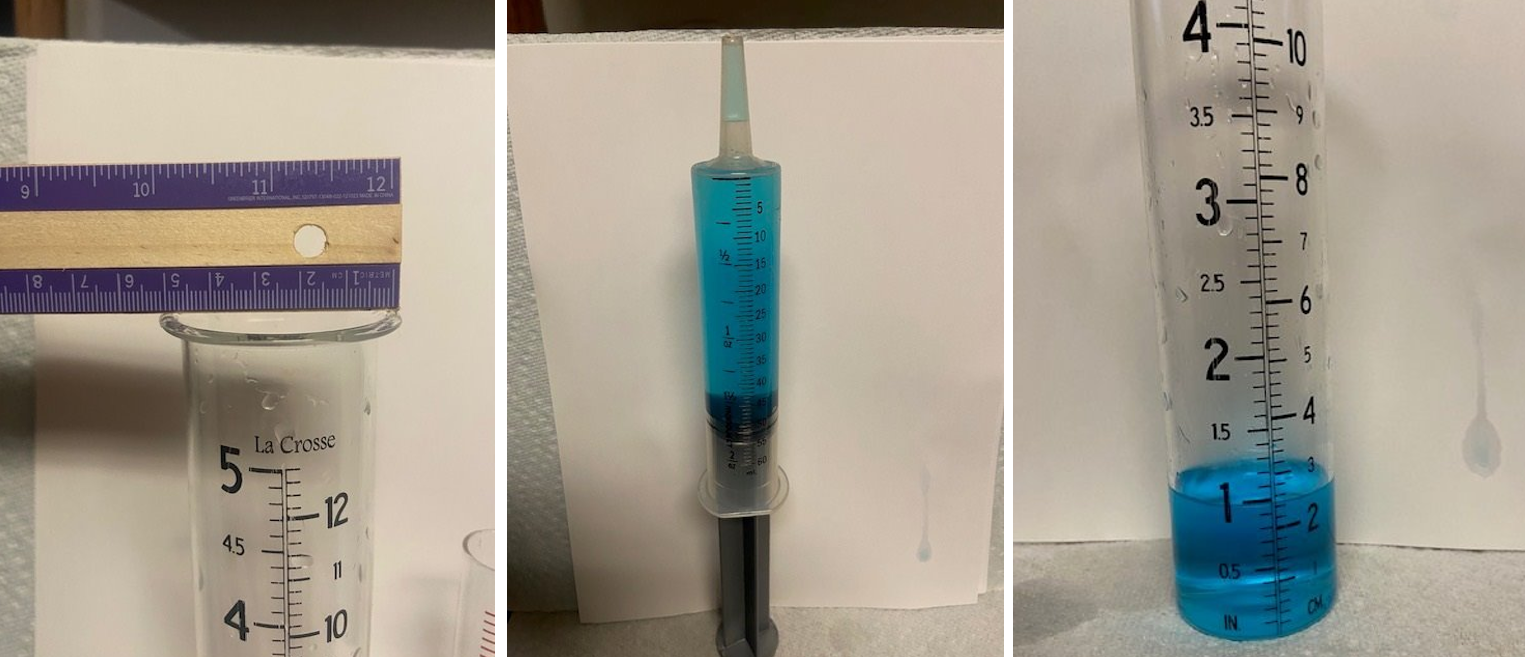Rain gauges are one of the best low-cost tools for saving water
An accurate rain gauge can help producers take full advantage of rainfall and reduce unnecessary irrigation water use.

One of the best tools for managing irrigation and saving water is a simple rain gauge. Even with the aid of modern weather forecasts, it is hard to beat data collected from your field. While manual collection of rainfall data does require some effort, it can be easily incorporated into your scouting regime. Good irrigation records, a weather forecast, and frequent evaluation of the crop’s stage, stressors and received rainfall will provide you with all the ingredients to manage your irrigation.
There are several issues with depending on your preferred meteorological source alone for irrigation management. Even with today’s state-of-the-art meteorological equipment, it is rare that the forecast is always right. Even if your meteorologist can tell you when and where it will rain, projections of received volume are typically associated with a high degree of uncertainty. To further complicate the issue, most forecasts are generated for population dense areas. If you’re lucky, your weather source may interpolate between the geographical locations used to calculate the weather.
While this may be better than assuming your weather will be the same as the closest data collection site, precipitation is often a spatially sensitive variable. Have you ever seen a nice storm front rain on the neighbor’s field while you’re still kicking up dust? These events may be uncommon, however, it’s not uncommon to see a quarter-inch difference in received rainfall within a half mile. Checking a manual rain gauge shortly after a precipitation event avoids all the guesswork.
Not all rain gauges are created equally. There are dozens of different rain gauge designs available, ranging from something that resembles a small test tube to large, complex apparatuses. While small devices might be enticing due to low costs and convenience, it's often worth spending a few extra dollars for a higher quality rain gauge. A 32-ounce fast food cup can even be made to work as a fairly accurate rain gauge when paired with a graduated cylinder. Learn more about this in the fact sheet “Catch Can Stands for Rain Gauges and Uniformity Check for Evaluating Irrigation” from the Michigan State University Extension Irrigation website.
Based on preliminary results of a rain gauge comparison done by the Michigan State University irrigation team, rain gauges with small collection openings had larger degrees of error due to reduced sampling size. Some of the cheaper models also have printed units of measurement as opposed to etched or molded markings. The paint or ink used to measure can be harder to read, especially after they have faded.
Additionally, some systems measure in quarters and eighths as opposed to tenths of an inch. This works, however, tenths are easier to work with and more precise, mathematically speaking. If you’re making an effort to collect manual data and managing irrigation that will apply many gallons of water, it’s wise to invest in a rain gauge you have confidence in.
Electronic rain gauges can also be purchased and set up to automatically send you data. This saves some effort, but this equipment is not flawless. Debris can easily plug the funnel that most electronic rain gauges are composed of. Without maintenance, it’s easy to be misinformed by these units. If used properly, they can be convenient, provide real-time data and save you a lot of driving.
Both manual and electronic rain gauges should be tested to ensure proper calibration. This can be done by pouring a known volume of water into the gauge and dividing that volume by the surface area of the gauge's opening. The reading indicated on the rain gauge should match the result of your calculation. An example is shown below. Alternatively, you can compare readings to a rain gauge that is known to work well.

Carefully measure the diameter of the opening of your rain gauge in centimeters or inches. Measure from the crown of the lip from one side to the crown of the lip on the other (left image). The table below provides the volume a half-inch, 1-inch and 1.5-inch rainfall should measure in your rain gauge. Use a graduated cylinder or a large syringe from the local farm store to accurately measure out the volume listed for your gauge’s opening and pour it into the rain gauge (center image). If the gauge is accurate, it will read precisely 0.5, 1 and 1.5 inches (right image). Replace the gauge if it has a noticeable difference.
|
Rain Gauge Diameter |
cc or milliliters |
|||
|---|---|---|---|---|
|
Centimeters |
Inches |
1/2-inch |
1-inch |
1.5-inch |
|
2.0 |
0.79 |
4 |
8 |
16 |
|
2.5 |
0.98 |
6 |
12 |
25 |
|
3.0 |
1.18 |
9 |
18 |
36 |
|
3.5 |
1.38 |
12 |
24 |
49 |
|
4.0 |
1.57 |
16 |
32 |
64 |
|
4.5 |
1.77 |
20 |
40 |
81 |
|
5.0 |
1.97 |
25 |
50 |
100 |
|
5.5 |
2.17 |
30 |
60 |
121 |
|
6.0 |
2.36 |
36 |
72 |
144 |
|
6.5 |
2.56 |
42 |
84 |
169 |
|
7.0 |
2.76 |
49 |
98 |
196 |
|
7.5 |
2.95 |
56 |
112 |
224 |
|
8.0 |
3.15 |
64 |
128 |
255 |
|
8.5 |
3.35 |
72 |
144 |
288 |
|
9.0 |
3.54 |
81 |
162 |
323 |
|
9.5 |
3.74 |
90 |
180 |
360 |
|
10.0 |
3.94 |
100 |
199 |
399 |



 Print
Print Email
Email